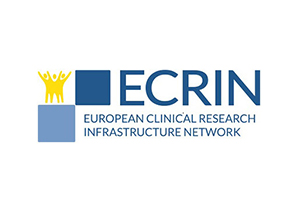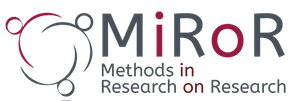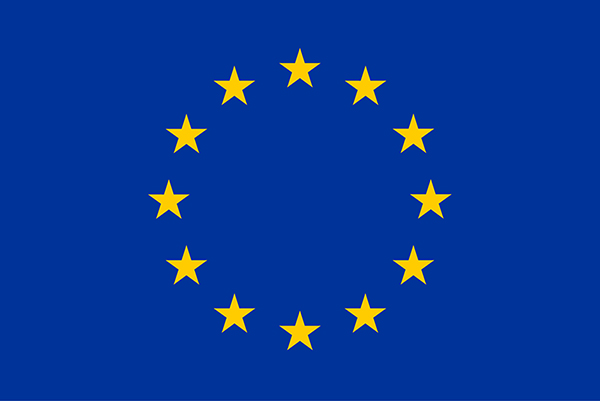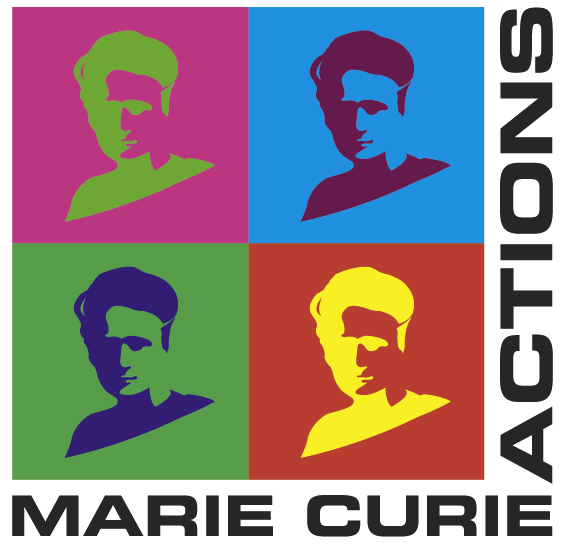Interview with Jacques Demotes
Interview with Jacques Demotes
15 June 2017 Comments Off on Interview with Jacques Demotes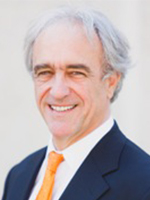 This month two MiRoR research fellows, Maria Olsen and Mona Ghannad (University of Amsterdam) had the chance to interview Jacques Demotes, the Director General of the European Clinical Research Infrastructure Network (ECRIN) in Paris.
This month two MiRoR research fellows, Maria Olsen and Mona Ghannad (University of Amsterdam) had the chance to interview Jacques Demotes, the Director General of the European Clinical Research Infrastructure Network (ECRIN) in Paris.
The interview covers questions about clinical trials, quality management and transparency in research and advices for young research fellows. The transcript is available below.
ECRIN stands for European Clinical Research Infrastructure Network; could you please tell us a little bit more about the organization?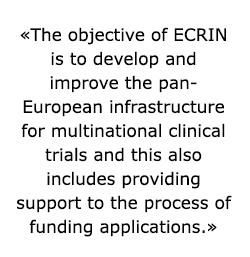
In brief, ECRIN is a non-profit organization and we work to support the conduct of multinational clinical trials, especially non-commercial trials, meaning investigator-initiated clinical trials or trials initiated by small and medium-sized companies. The objective of ECRIN is to develop and improve the pan-European infrastructure for multinational clinical trials and this also includes providing support to the process of funding applications.
ECRIN was developed through several EU-funded projects on clinical trial networks. What were the challenges in multinational clinical trials that ECRIN sought to address when it began?
When ECRIN was established in 2004 there were several challenges in conducting multinational clinical trials. However, the 2 main bottlenecks for the conduct of investigator-initiated clinical trials across European countries were the lack of interoperable infrastructures and the lack of funding available for multinational clinical trials. The funding is critical, because without it, you can only exchange good practices, quality standards, etc. though, in the end, you need a clever mechanism to support international collaboration.
Furthermore, there were many national differences between funding systems, practices of ethics committees, health systems and in particular regarding regulation, since it was very divergent (e.g. for a trial involving 10 countries you had to submit 10 separate dossiers in order to get authorizations from the corresponding ethics committees and competent authorities). At the time, when we started ECRIN in 2004, a EU Directive was under implementation (the Directive 2001/20/EC) with the aim to simplify authorization. Although the Directive brought some improvements in the inter-operability of the regulation for clinical trials, it only focused on medicinal products, while all other types of clinical trials were still regulated by national laws, with no harmonization. Even for medicinal products trials, harmonization remained partial: as it was a Directive, and not a Regulation, so it had to be transposed into national law. So each country interpreted the Directive based on its own  national legislation, resulting in something that was not perfectly harmonized. The Directive of 2001 was thus limited, or arguably a failure, in that it was unable to simplify legislation across countries.
national legislation, resulting in something that was not perfectly harmonized. The Directive of 2001 was thus limited, or arguably a failure, in that it was unable to simplify legislation across countries.
Moreover, a main issue with this Directive was that it lacked a risk-based approach. This means that it did not take different levels of risk into account for the different types of clinical trials, and thus, it had the same requirements for trials with drugs already on the market as for new drugs. Because the majority of trials run by academic organizations are low risk, they could have benefited based on these grounds (in short, it would have been easier for some to get trials funded and implemented).
Since the first years of ECRIN, did you observe any improvements in the possibilities for conducting multinational clinical trials across countries in the EU?
I definitely did, compared to when we started in 2004 there have been a lot of changes, for example in terms of legislation. ECRIN promoted the idea that legislation should take risk into account in decisions to authorize a given study.. In 2012, it resulted in the drafting of a new Regulation, which was adopted in 2014 (Regulation EU No 536/2014) and will be implemented in 2018. First of all, this was an improvement because it is a Regulation and not a Directive, hence it does not have to be transposed into national legislation. Secondly, this regulation has some provisions regarding the risk-based approach – this makes it a bit easier to obtain authorization for low-risk trials (as compared to high-risk trials, but despite that, I consider that the risk-based approach in this regulation could have been more ambitious). Eventually, you will only have to submit a single dossier – this is a major improvement in terms of simplification and coordinated approach for obtaining authorizations for the clinical trials.
Another important improvement is the development of new funding possibilities. In 2004, there was no available source for funding multinational clinical trials in the framework program of the EU. Hence, it was very difficult to get multinational projects funded because it required several applications, at different funding agencies and in different countries. Moreover, you had to get the same protocol accepted, which was not impossible, but demanding. In 2011 the European Commission started to fund clinical trials with an amount in the range of 100-120 million euros per year. Since then, with a pivotal amount given for a multinational clinical trial in the range of 6 million euros, the EU funds approximately 20-25 clinical trials every year, and this is major progress. However, despite the EU is now funding some trials, there is still a need for more funding sources in order to cover all the scientific and medical questions that have yet to be addressed. A noteworthy example is the development of a funding mechanism called ERA-Net (funded under Horizon 2020 and the Member States’ funding agencies), that is based on combining national budgets (i.e. each participating country pays for their own component). In this manner, the funding is pooled from multiple national sources, but only requires a single evaluation process. Until recently the ERA-Net was used for experimental research, but the ERA-Net on rare diseases launched a call in 2016 to fund multinational clinical trials; ECRIN is very interested in working on developing a generic ERA-Net mechanism for funding clinical trials.
Another area where there have been changes and improvements is in transparency policy. A turning point was in September 2004, when the requirement for registration of clinical trials was introduced. This came with a statement from the international committee of medical journal editors (ICMJE) stating that they would no longer publish papers of trials that were not registered. This was a big earthquake. Another big struggle we have overcome in transparency is publication of aggregated results. Although it is not expected to be effectively implemented before 2018, this matter is part of the Regulation EU No 536/2014.
Another notable issue that is still not resolved is how to provide access to individual patient-level raw data, i.e. how to manage data sharing in clinical trials. This is something very important that we are working on.
Despite ECRIN being an EU-project and supporting trials conducted in the EU, does the work of ECRIN reach beyond the EU?
ECRIN is clearly an organization that supports multinational trials only in Europe, however European investigators working on rare diseases sometimes need partners outside of Europe, and this is something we also support. Yet, working in bi-lateral collaborations is demanding and not necessarily very efficient, so it led to another collaborative project we are currently working on. This is in line  withPatient involvement has changed tremendously since 2004. I think this is due in part to the emergence of strong patient groups. For example, AIDS patients have been very well organized, and now additional groups for rare diseases have gained strength. One example is an earlier initiative from the OECD (the Organisation for Economic Co-operation and Development), which aims to facilitate multinational clinical trials worldwide. However, OECD is only in charge of publishing documents and guidelines, and not implementing them. With the OECD’s work as a starting point, we started a collaboration with the WHO that resulted in a new project called CRIGH (Clinical Research Initiative for Global Health). CRIGH started in January 2017 and the secretariat is held by the NIH (National Institutes of Health) and ECRIN. This is really about global collaboration. So far we have almost 35 members and observers from 5 continents including organizations in Europe but also in the US, Latin America, Africa, Japan, and Korea. In CRIGH, we are now in a similar situation as that of ECRIN in 2004, when we had just started: our main priority is to identify the bottlenecks and obstacles and what actions can be done. This is a rather challenging point although, as with ECRIN, we already know that a key issue is funding.
withPatient involvement has changed tremendously since 2004. I think this is due in part to the emergence of strong patient groups. For example, AIDS patients have been very well organized, and now additional groups for rare diseases have gained strength. One example is an earlier initiative from the OECD (the Organisation for Economic Co-operation and Development), which aims to facilitate multinational clinical trials worldwide. However, OECD is only in charge of publishing documents and guidelines, and not implementing them. With the OECD’s work as a starting point, we started a collaboration with the WHO that resulted in a new project called CRIGH (Clinical Research Initiative for Global Health). CRIGH started in January 2017 and the secretariat is held by the NIH (National Institutes of Health) and ECRIN. This is really about global collaboration. So far we have almost 35 members and observers from 5 continents including organizations in Europe but also in the US, Latin America, Africa, Japan, and Korea. In CRIGH, we are now in a similar situation as that of ECRIN in 2004, when we had just started: our main priority is to identify the bottlenecks and obstacles and what actions can be done. This is a rather challenging point although, as with ECRIN, we already know that a key issue is funding.
At the last MiRoR training event we had in Liverpool, there was a great focus on patient and public involvement (PPI) in both the planning and the execution of clinical trials. At the European level, do you also see more PPI involvement in clinical trials?
EURORDIS (a European Federation of Rare Disease Patient Associations), which is a very well organized, efficient, well-informed and competent patient association. At ECRIN we have a focus on patient involvement. For example, we have included in our policy that investigators should involve the relevant patient association in the design of the protocol, when possible. In our scientific board, which evaluates the projects we run, we also have a patient representative. In addition, we have been involved in several projects on patient involvement. This includes, for example, a project called ECRAN, which developed a movie for patients with the aim of explaining the principles of clinical trials in a more accessible, non-scientific way. We are also in a partnership with the COMET (Core Outcome Measures for Effectiveness Trials) initiative which, in their methodology, has involved patients in the selection of outcome measures. Lastly, the most recent example of our commitment to patient involvement is CRIGH; patient involvement is one of the project’s six main activities. So yes, it is true that the landscape has changed.
What is ECRIN’s role in terms of supporting collaboration between industry and academia and/or non-profit organizations?
Our objective is scientific – to promote the development of knowledge. Most of the trials we support are trials centered on the patient, meaning we support investigators whose objective is to answer the question “What’s the best treatment option for this disease, or for these patients?”. Other trials we support are trials initiated by a spin-off company or by a SME which would contribute to innovation. Such SME-sponsored trials may be publicly funded, for example through Horizon 2020. We participate in such projects and we provide our support and expertise not only for trial management, but also for the preparation of Horizon 2020 applications.
There are other clinical research projects that aren’t necessarily registration trials, funded by both public and private money. This is typically the case for the Innovative Medicines Initiative (IMI), a public-private partnership program between the EU and the pharmaceutical industry in Europe. The condition for a project to get selected is that it should involve more than one company. The objective is to improve the science base and make Europe more attractive to pharmaceutical companies to develop their new projects. Their research questions aren’t aimed at supporting the development of a given product. Rather it is non-competitive or pre-competitive research made between the public and private sector.
In the context of publication, authors usually face challenges in getting negative results published. Do you think we should see a change in the current model of authorship with regards to incentives and rewards for authors?
In terms of publication, we have a problem. Scientists are evaluated based on their publications. The peer-review system is not adapted because the peer-reviewers don’t have access to the data. There is a need to improve the publication system, the peer-review system, and the science evaluation system. A scientist is merely evaluated on the authorship, and only the first and last authors are well considered in publications. This is not an incentive for collaboration in large projects. As a result, in an author’s evaluation perspective, the perfect paper is a paper with two authors. In disciplines like particle physics, this problem has been resolved by alphabetising author lists in large projects.
With the complexification of biomedical sciences, not just with clinical trials, we need more interdisciplinarity and more competencies. We also see that the current system just doesn’t work. It is hard to change this system since it’s kept in check by the very people who hold academic positions just because they were first or last author for many years. It’s hard to change the rules of the game but we have to change it dramatically and invent a new way of evaluating research. I think it shouldn’t be done on an individual level. We have to change science; it is no longer an individual sport, it is become a team sport.
Pre-clinical systematic reviews of animal studies are conducted to support the start of clinical trials. What are your thoughts on the importance of systematic reviews and what are ECRIN’s projects when it comes to pre-clinical systematic reviews?
The principle of systematic review is a good one. I know, for instance, that the NIHR requires a systematic review for funding trials that it’s supporting. At ECRIN, a prerequisite for us to provide support to trials is that we need evidence from animal studies, if possible, and a systematic review of evidence derived from human studies, whenever relevant – perhaps the answer to the question already exists and there is no need for a clinical trial. If all the material that you work with is good, there isn’t a problem, but this is not always the case. One of the major issues with systematic reviews is that they require the use of the same outcome measure. This problem is not only specific to humans, but is also applicable to animals, as you don’t measure the same outcomes. Additionally, there are very few groups that practise randomisation, blinding, outcome assessor, and so forth in animal experiments.
We are fully aware that there is a gap between the pre-clinical studies and the clinical studies for many reasons, although we share 98% of genes with mice. Among our objectives, we want to to identify what could be the equivalent to generic symptoms in human clinical trials to assess well-being, quality of life, fatigue and so on in animal models. We aim to do this to take the greatest advantage of what is done in pre-clinical studies in order to improve their predictive value in human trials.
An important aim of the MiRoR program is the implementation of strategies and solutions. What advice would you give us as early stage researchers based on your experience establishing ECRIN, in terms of the methods that we develop?
Be patient. In my experience, it turns out that when an idea is good it goes through an unpredictable process and will be positively filtered out, and the outcome will emerge. It is very difficult to predict what will be the pathway between the demonstration of the validity of the idea and, after a very complicated process, it becoming part of a new standard, or a new regulation. The ideal way is to develop the best possible ideas and strategies and to trust the scientific community for selecting it. Good ideas come from one person or one group and you’ll see the principle implemented. Not necessarily in your country or discipline, but in the end, it will come back. Sometimes the recognition of the quality of your idea will come from a totally different field of study.
How would you like to see ECRIN evolve in the future?
ECRIN has grown more than I anticipated. I hope ECRIN will keep growing and avoid fragmentation. Global extension is a rather remote objective. In Europe, versus developing and emerging countries, not only is the organisation different, but the objectives are also different. For Europe, I think one of our major long-term objectives is to unlock the scientific potential of Central Europe. If we can really work together, with a broad medical and scientific expertise and a critical mass of potential patient population, in an easy, convenient and efficient way, we can play a major role in enhancing the scientific and medical landscape.
